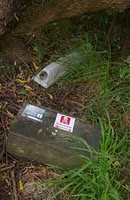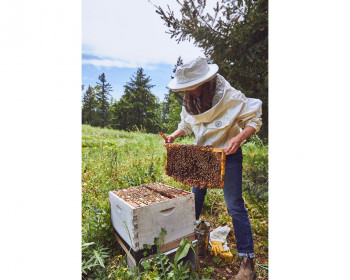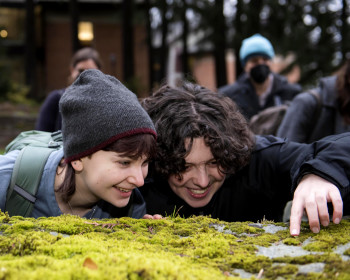Lessons from New Zealand: A Conservation Primer (Part 2 of 3)
Open gallery

June 8, 2009
The introduced mammals have thrived in their new habitats, as the rest of the biota simply had not evolved to have any defenses against these new creatures. As a result native bird and plant species are severely threatened, while introduced mammal populations and invasive plants are increasing exponentially. Flightless, and ignorant, birds have no chance in defending their nests or themselves. Native habitat is being taken over by the much more successful plants and, in terms of the logging industry, much more profitable introduced trees.
What came as a shock to us Northern hemisphere biology students was how much of New Zealand’s conservation practices involved directly killing the guilty species. Much of the country is covered with trap lines and bait stations full of poison pellets. Poison, manufactured under the name of 1080, is aerially distributed with the intent of killing the introduced mammals. This was a hard pill for me to swallow. It must be remembered that conservation is a reactionary science, in that we are constantly cleaning up some environmental problem, often of human origin.
Sometimes it may be deemed necessary to act before all the pieces of the puzzle are fully assessed. While the Department of Conservation (DOC) claims to have already investigated many of the affects of 1080 on native species and the soil it could leach into, they also admit that much of this research is ongoing and very much not complete. We were able to meet with many representatives from DOC, yet each time I was left not entirely convinced with their arguments. Much of these efforts were focused on the mainland where it is impossible to completely control an environment simply due to the fact that it is not isolated. Animals, and seeds, are free to disperse throughout these areas as they please. This process of population control is never-ending, in time and in funding requirements. Other efforts have been carried out on many of New Zealand’s surrounding islands where virtually all of the introduced species have been eliminated. This has allowed DOC and other conservation scientists to facilitate the recovery of native flora and reintroduce or transplant threatened species, such as the tuatara, the South Island robin, or the kiwi. DOC is certainly not void of success stories, but still has their hands full, if not overflowing.
The great internal debate concerning this form of conservation begins when one realizes the enormity of the introduced species problem. Even those scientists and conservation managers who have invested their life’s work in these problems admit that there is no end in sight. It is perhaps impossible to ever eliminate the threat of these species, let alone entire populations. So who are we, then, to go about killing these creatures that we introduced to somehow artificially sustain native populations? How long will this go on, or will we be able to even afford these methods? Furthermore, what damage is being done to the health of these ecosystems, as new chemicals and compounds leach into the soil, and are do the benefits outweigh the costs? Is any legitimate research even being done regarding these questions?
Posted by Kat Fiedler ‘11
More Environmental Studies Stories
Environmental Studies is located in room 343A of John R. Howard Hall on the Undergraduate Campus.
MSC: 62
email envs@lclark.edu
voice 503-768-7790
fax 503-768-7620
Symposium Advisor Jessica Kleiss
Environmental Studies
Lewis & Clark
615 S. Palatine Hill Road MSC 62
Portland OR 97219


